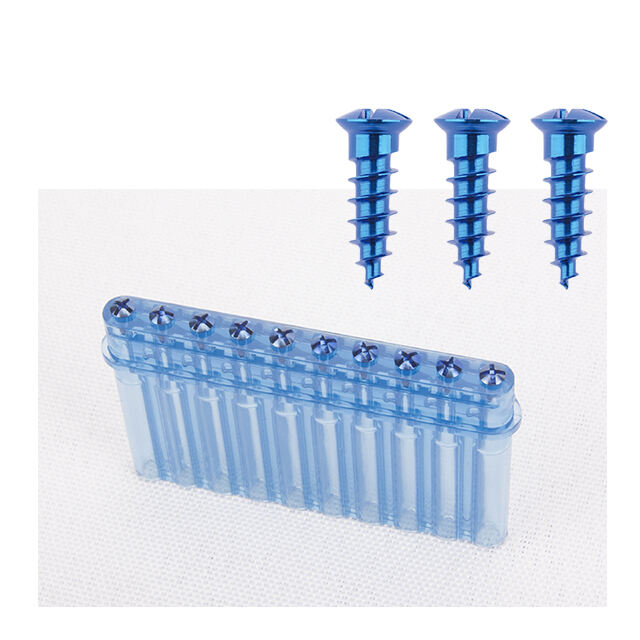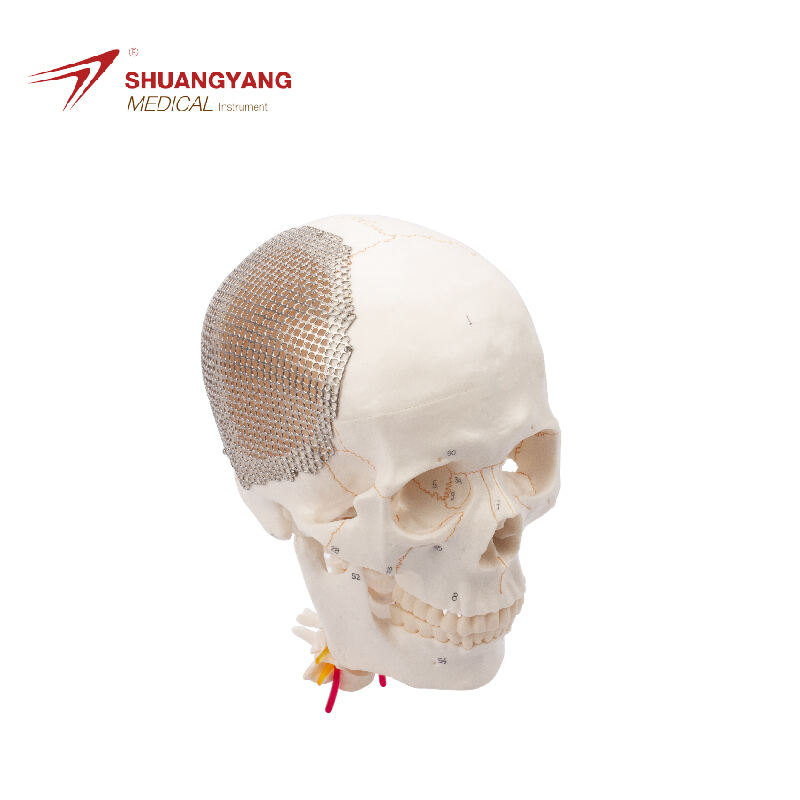Understanding Modern Advances in Skull Reconstruction Technology
The evolution of cranial systems has revolutionized the approach to complex skull reconstruction surgeries, offering unprecedented precision and patient outcomes. These sophisticated medical technologies combine cutting-edge materials with innovative design principles to restore both form and function to damaged skull structures. Modern cranial systems represent a culmination of decades of research, engineering excellence, and surgical expertise, providing surgeons with reliable tools for even the most challenging reconstructive procedures.
Core Components of Advanced Cranial Systems
Biomaterial Innovation and Integration
The foundation of effective cranial systems lies in their advanced biomaterials. These materials must strike a delicate balance between durability and biocompatibility, ensuring long-term stability while promoting optimal tissue integration. Titanium alloys and high-grade polymers dominate the landscape, offering superior strength-to-weight ratios and excellent osseointegration properties. The latest cranial systems incorporate materials that closely mimic the mechanical properties of natural bone, reducing the risk of complications and improving patient comfort.
Recent developments in surface treatments and coating technologies have further enhanced the performance of cranial systems. Micro-textured surfaces and bioactive coatings facilitate stronger bonds between implant and bone, accelerating healing and reducing recovery times. These innovations have made it possible to achieve better outcomes in complex reconstruction cases, particularly those involving large defects or irregular geometries.
Precision Engineering and Custom Fabrication
Modern cranial systems leverage advanced manufacturing techniques, including 3D printing and computer-aided design, to create patient-specific solutions. This level of customization ensures optimal fit and aesthetic outcomes, particularly crucial in visible areas of the skull. The precision engineering behind these systems allows surgeons to plan procedures with unprecedented accuracy, reducing operating time and improving safety margins.
The integration of digital planning tools with cranial systems has transformed the pre-operative phase of skull reconstruction. Surgeons can now visualize and simulate procedures using detailed 3D models, helping to identify potential challenges and optimize surgical approaches before entering the operating room.
Surgical Applications and Implementation
Complex Trauma Management
In cases of severe head trauma, cranial systems provide essential solutions for reconstructing damaged skull sections. The versatility of modern systems allows surgeons to address both simple and complex fracture patterns, restoring structural integrity while maintaining aesthetic considerations. Advanced fixation mechanisms ensure stable reconstruction even in cases with multiple bone fragments or significant bone loss.
The systematic approach to trauma management using cranial systems includes careful assessment of defect characteristics, selection of appropriate components, and precise implementation of surgical protocols. This methodical process helps achieve optimal outcomes while minimizing the risk of complications.
Oncological Reconstruction Procedures
For patients requiring skull reconstruction following tumor resection, cranial systems offer reliable solutions for complex defect repair. The ability to create custom implants that perfectly match the surgical defect ensures excellent cosmetic results while providing robust protection for underlying brain tissue. Modern systems also accommodate the potential need for future imaging and treatment access, an important consideration in oncological cases.
The integration of cranial systems in oncological reconstruction has significantly improved the quality of life for cancer patients, allowing for more aggressive tumor resection while ensuring reliable skull reconstruction options are available.

Clinical Outcomes and Patient Benefits
Enhanced Recovery Protocols
The implementation of advanced cranial systems has led to streamlined recovery processes for patients undergoing skull reconstruction. Modern materials and designs promote faster healing, reduced post-operative pain, and shorter hospital stays. The precision fit of custom implants minimizes soft tissue irritation and speeds up the return to normal activities.
Patient monitoring systems integrated with cranial reconstructions provide valuable data on healing progress and potential complications, allowing for early intervention when necessary. This proactive approach to post-operative care has significantly improved overall outcomes.
Long-term Success Rates
Clinical studies consistently demonstrate the durability and effectiveness of contemporary cranial systems. Long-term follow-up data shows high success rates, with minimal instances of implant failure or need for revision surgery. The biological stability of modern materials, combined with precise surgical techniques, contributes to excellent long-term outcomes.
Patient satisfaction scores reflect the success of these advanced systems, with many reporting improved quality of life and confidence following reconstruction. The aesthetic results achieved with modern cranial systems often exceed expectations, helping patients return to their normal social and professional activities.
Future Developments and Innovations
Smart Material Integration
The next generation of cranial systems is exploring the integration of smart materials that can adapt to changing physiological conditions. These materials may include sensors for monitoring pressure, temperature, and other vital parameters, providing real-time feedback to healthcare providers. The development of bioactive materials that actively promote bone regeneration represents another exciting frontier in cranial system technology.
Research into novel manufacturing techniques and material combinations continues to push the boundaries of what's possible in skull reconstruction. These advances promise even more sophisticated solutions for complex surgical challenges.
Artificial Intelligence Applications
The incorporation of artificial intelligence in cranial system design and surgical planning is revolutionizing the field. AI algorithms can optimize implant designs, predict potential complications, and assist in surgical decision-making. Machine learning applications are improving the accuracy of custom fitting and reducing the time required for implant design and fabrication.
The future of cranial systems will likely see increased automation and precision in both manufacturing and surgical implementation, leading to even better outcomes for patients requiring skull reconstruction.
Frequently Asked Questions
What makes modern cranial systems more effective than traditional methods?
Modern cranial systems combine advanced biomaterials, precise custom fabrication, and sophisticated surgical planning tools to achieve better outcomes. They offer improved structural integrity, faster healing times, and superior aesthetic results compared to traditional reconstruction methods.
How long does recovery typically take after cranial system implementation?
Recovery time varies depending on the extent of reconstruction, but most patients experience significant healing within 6-8 weeks. The use of modern cranial systems often results in faster recovery compared to traditional methods, with many patients returning to normal activities within 3-4 months.
Are cranial systems permanent solutions for skull reconstruction?
Yes, modern cranial systems are designed to be permanent solutions. The advanced materials and precise fitting techniques used in contemporary systems ensure long-term stability and durability, with most patients never requiring additional surgery or replacement.
 EN
EN
 FR
FR
 ES
ES
 AR
AR

